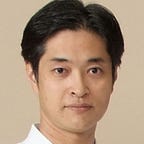Irikumi and Semi-Jiyū Kumite
In Toguchi Seikichi’s “The Heart of Karate” (1986), there is the following text. (pp. 41, 42)
In my youth, when I was under the teachings of the founder of Gōjū-ryū, Miyagi Chōjun Sensei, these words were in use in Okinawa in those days.
(i) tīchikatīmāni
(ii) kumitī
(iii) tītuchimāni
(iv) irikumi
Toguchi Sensei was initiated into Higa Seikō’s dōjō in March 1933 and later received direct instruction from Miyagi Sensei as well. Therefore, the above “in those days” probably means about 20 years from 1933 to Miyagi Sensei’s death in 1953.
Around 1952, he (Toguchi) was instructed by Miyagi Chōjun Sensei. From left to right: Yagi Meitoku, Miyagi Chōjun Sensei, Miyazato Ei’ichi, Toguchi Seikichi, and Miyazato Eikō. From “The Heart of Karate” by Toguchi Seikichi.
The following text follows the above.
These are Okinawan dialects, and Miyagi Sensei translated and applied them by creating the following terminology.
(i) Single kata — means “use your tī (hand),” and “tī” is the name of the predecessor of karate in Okinawa.(ii) bunkai kumite — kumitī means “kumite” in Japanese, a prearranged kumite in which a single kata is deconstructed for two people to practice together.
(iii) kaisai — means “try to unravel.” For example, when a single kata of koryū…
